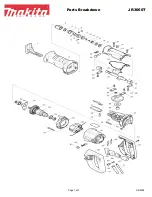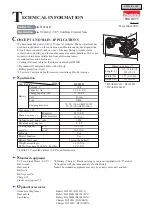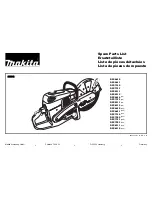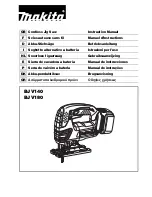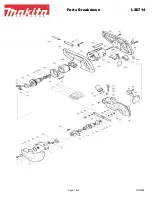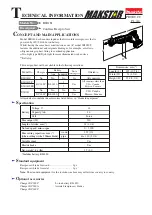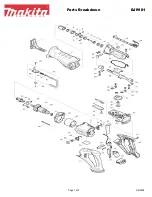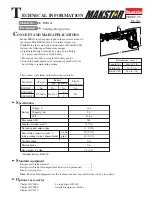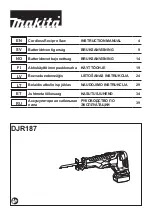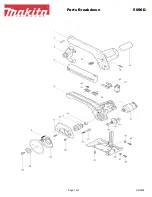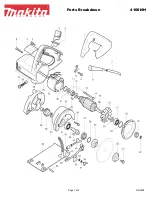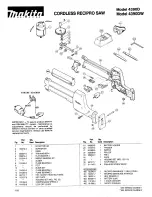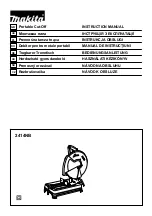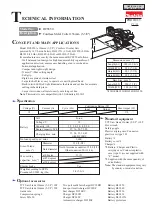
ASSEMBLY
BLADE GUARD
To reduce the risk of serious personal injury,
the blade guard must be in place when
making a through cut.
1.
While holding the blade guard assembly (A) in a vertical
position, hook the locating pin (B) at the back end of
the blade guard assembly into the slot at the back edge
of the riving knife.
2.
Rotate the blade guard assembly toward the front of
the saw until the metal portion (C) of the blade guard
assembly is parallel to the table as shown in Figure 20.
3.
While holding down on the front of the metal portion of
the guard (C) press the blade guard lock lever (D) down
until it snaps into the locked position. Check to make
sure the guard is locked onto the riving knife by pulling
on the guard. If the guard is not locked, the blade
guard lock lever will flip up to the unlocked position.
If the metal portion of the blade guard
assembly (C) is not parallel to the table, the
riving knife is not in the raised position. Remove blade guard
assembly and anti-kickback pawls and raise riving knife, then
reinstall the anti-kickback pawls and the blade guard assembly.
To remove the blade guard assembly:
1.
Lift the blade guard assembly lock lever (D) to the
unlocked position.
2.
Rotate the guard back and slide the pin (B) from the
riving knife slot.
LOCK
TAB
SUPPORT
ARMS
FIGURE 20
FIGURE 21
M
NOTE:
If blade guard is not parallel to table, riving knife is not
in raised (through cut) position.
Raise and lower each side of
the blade guard to verify free movement of the guard system.
Be sure the guard system can be raised enough to clear your
workpiece.
NOTE:
Blade alignment with riving knife can be adjusted.
See:
RIVING KNIFE HEIGHT SETTINGS, page 38.
Check the
blade guard for clearances and free movement.
21































